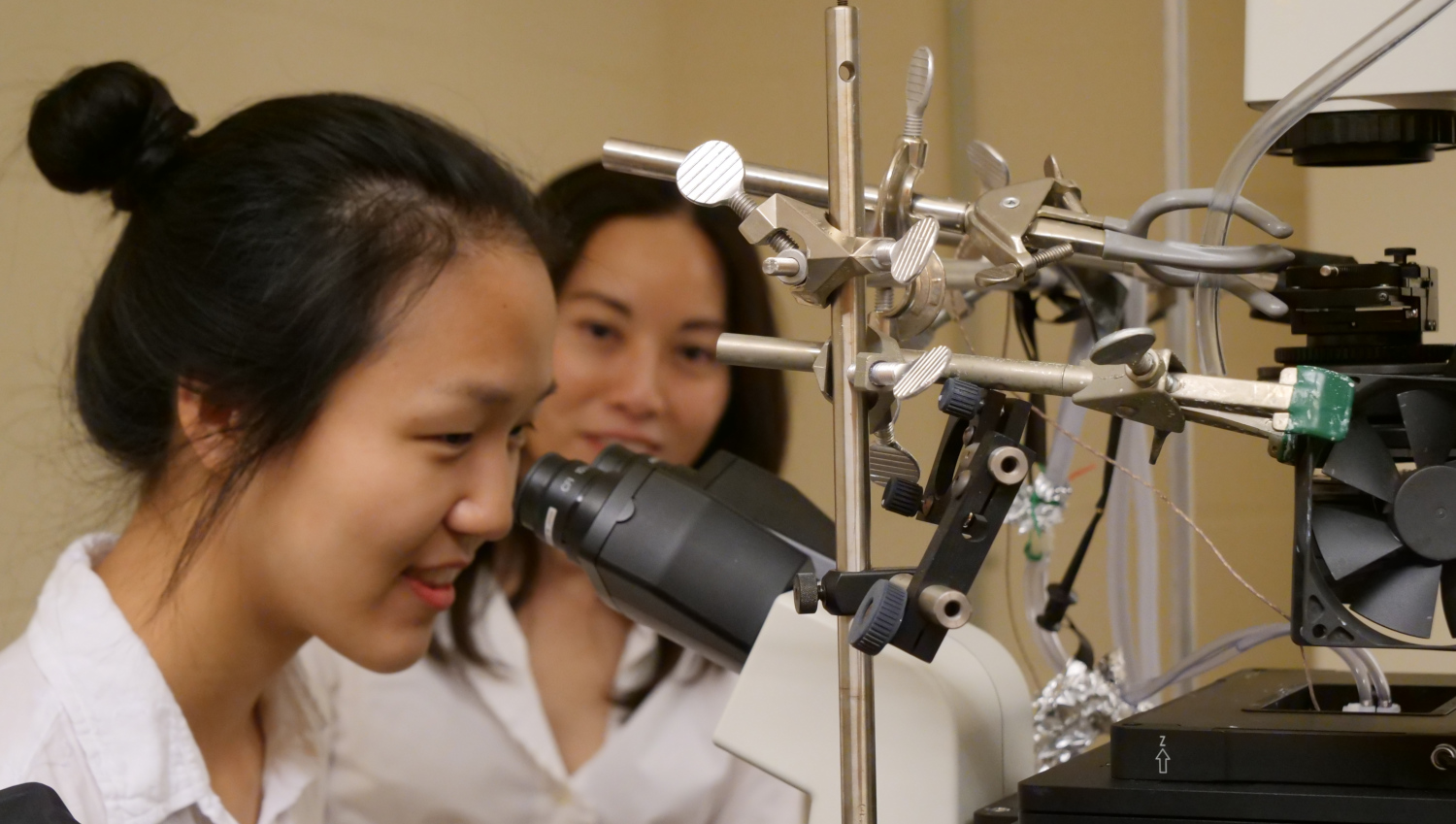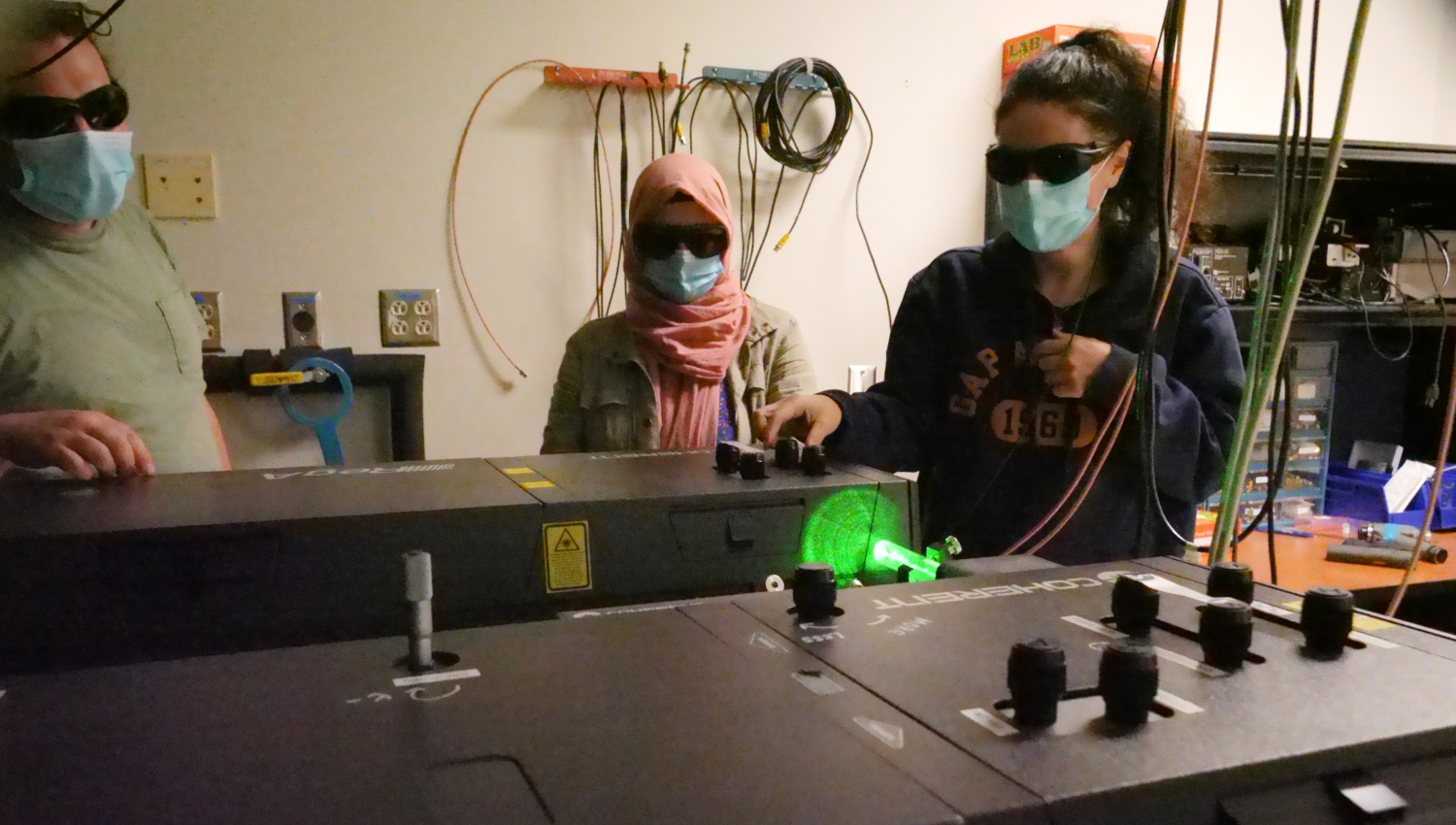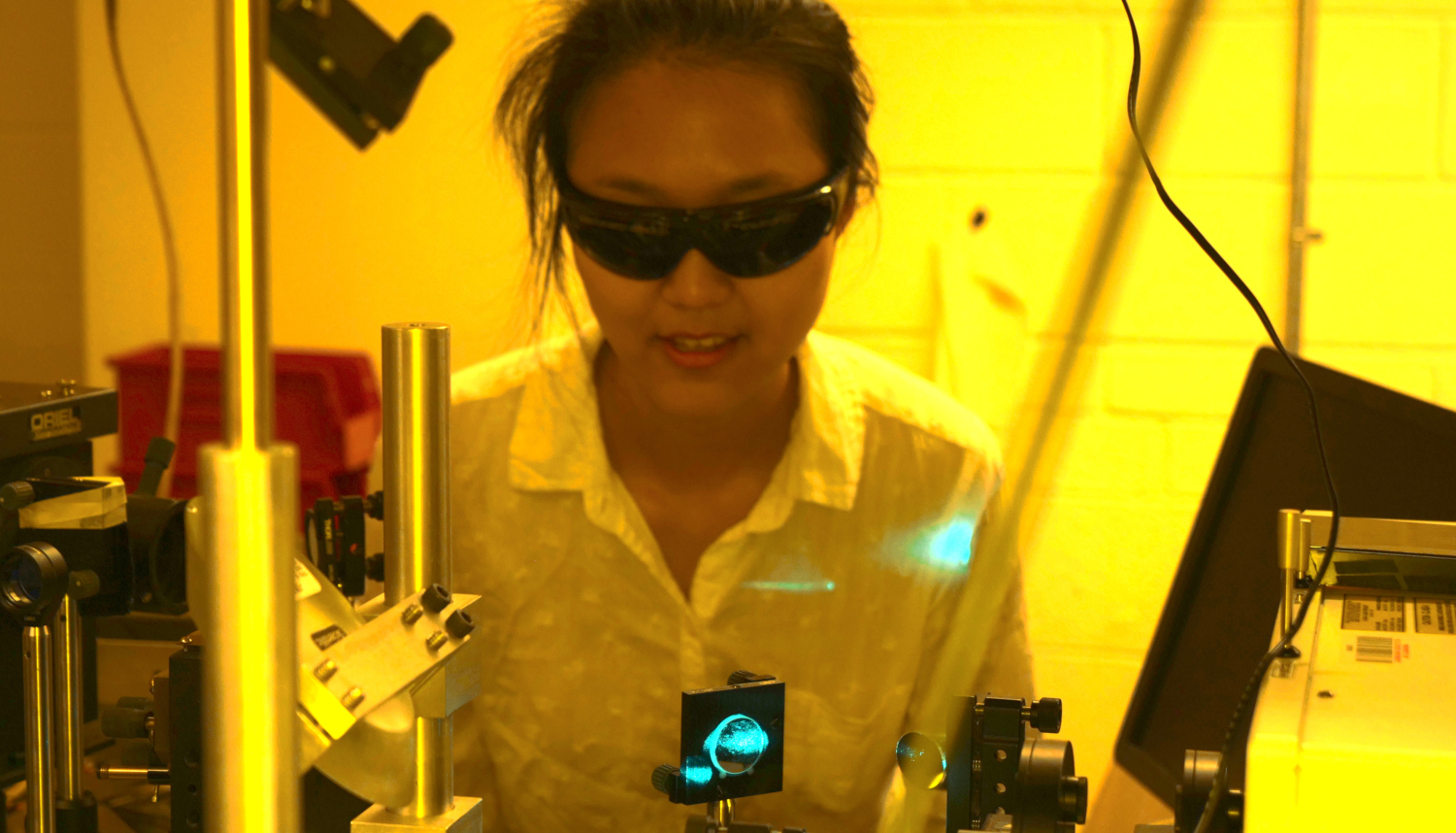Condensed Matter Physics

Research in 5 major areas
Electronic Materials
Highly visible and award-winning research using a number of sophisticated experimental tools (e.g., quartz crystal microbalance, fs spectroscopy, spectroscopic tunneling microscopy, synchrotron methods) is performed on a range of electronic, photonic and energy materials that spans from oxide interlayers to topological insulators, graphene and polymeric solar cells, of which which we determine their electronic, opto-electronic, structural, frictional and spin properties. Interdisciplinary, convergent science efforts focusing on organic and related reduced dimensional systems have been recently colocated in the Partners III building on Centennial Campus to be in close proximity to synthetic chemists and various engineering departments, and to make efficient use of shared facilities. These efforts constitute the nucleus of the ORganic and Carbon Electronics Laboratory (ORaCEL).
Faculty
Optics
This group studies near-field optical microscopy and spectroscopy; nanoRaman spectroscopy; optical characterization of electronic materials; propagation models and physics-based algorithms for wireless communications; and linear and nonlinear optical spectroscopy of materials, films, surfaces and interfaces under static and dynamic conditions.
Faculty
Soft Matter
This group studies dynamics of polymers on surfaces and in constrained thin films, nanoprobe tools for signal pathway investigations in cellular biology, absorption spectroscopy of metal-containing particulates in human tissue, diffraction enhanced mammography, single-molecule techniques for dynamic and structural studies of proteins and cells, interfacial instabilities, thin film flows and statistical mechanics of granular materials.
Faculty
Synchrotron
This group studies X-ray imaging, microscopy and spectroscopy of complex material and chemical systems; medical applications of diffraction-enhanced x-ray imaging.
Faculty
Theory and Computation
This group studies large-scale simulations of real materials, biomolecular processes, semiconductors, nanotubes and related nanoscale structures; quantum Monte Carlo simulations; O(N) and multiscale methods; quantum transport; nanostructured materials; phase separation; ferrofluids liquid-state theory; interfaces; diffusion; neural networks; pattern formation; and electronic properties of transition-metal oxides and silicates.


